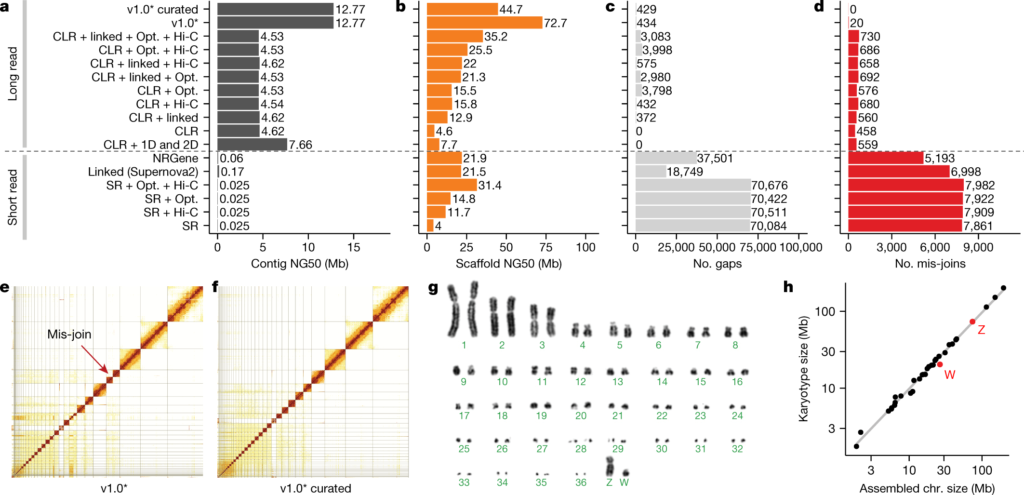Sanger or chain-termination sequencing is a steadfast pillar of reliability and precision in genetic analysis. Since its inception in the 1970s, this method has been synonymous with accuracy, offering researchers and clinicians a gold standard for deciphering the sequence of nucleic acids. Despite the advancement of next-generation sequencing technologies, the enduring appeal of chain-termination sequencing lies in its proven track record, versatility, and cost-effectiveness for a wide range of applications. The article explores the enduring significance of chain-termination sequencing in genetic analysis, highlighting its continued relevance in an ever-evolving field.
-
Sequencing Accuracy and Reliability
Sanger sequencing, renowned for its accuracy and reliability, is a vital technique for determining DNA and RNA sequences. Its precision stems from a meticulous process where DNA polymerase extends a primer along a DNA template, integrating altered dideoxynucleotides (ddNTPs) with fluorescent labels that halt chain elongation at specific bases.
Then, sorting and separating these terminated fragments helps generate a precise sequence readout. The method’s robustness has made it indispensable in various domains, including research and clinical diagnostics, where identifying exact nucleotide sequences helps experts understand genetic variations, identify mutations, and understand biological mechanisms.
In scenarios where rapid and reliable identification is paramount, such as in the case of infectious disease outbreaks, sanger sequencing offers a trusted solution for discerning the genetic makeup of pathogens and informing effective public health responses.
-
Cost-Effectiveness for Small-Scale Projects
Despite the rise of next-generation sequencing (NGS) with its high-throughput capacities, Sanger sequencing maintains its appeal for smaller-scale research projects with low genomic regions and limited samples. Its cost-effectiveness makes it a practical choice in scenarios where NGS might be overly complex or financially burdensome.
NGS laboratories worldwide still rely on Sanger sequencing because it delivers accurate results without requiring extensive infrastructure or specialized expertise, making it a versatile and accessible tool for various research and diagnostic applications. That makes Sanger sequencing a time and cost-efficient option for identifying single-gene disorders in research and clinical settings.
-
Well-suited for Sequencing Shorter DNA Fragments
Sanger sequencing is well-suited for sequencing shorter DNA fragments of up to 1000 base pairs, rendering it ideal for various applications in laboratories worldwide. Its proficiency in accurately determining the sequence of shorter DNA segments makes it indispensable for tasks such as
- Sequencing PCR products
- Validating sequences obtained from next-generation sequencing (NGS) platforms
- Confirming genetic mutations
Such capability ensures the reliability and accuracy of sequencing results, particularly in research and clinical settings where precise genetic analysis is crucial. Consequently, this sequencing technology continues to be a preferred choice in laboratories for its versatility and effectiveness in handling shorter DNA fragments with precision.
Using shorter DNA fragments in sequencing runs offers advantages such as swift initialization, efficient processing, reduced analysis time, enhanced sample throughput, and improved resource utilization. These benefits contribute to the effectiveness and productivity of molecular biology research and diagnostic activities.
-
Effective in Validation and Quality Control
Validation and quality control are paramount in genomics research, where accuracy is non-negotiable. Sanger sequencing is vital, serving as a gold standard for validating variants detected by next-generation sequencing (NGS) technologies as it’s a well-established method in molecular biology laboratories. Researchers are often familiar with its protocols and workflows, contributing to its role in validating results in NGS studies.
By independently confirming NGS results, Sanger sequencing enhances the reliability of genomic data, ensuring researchers and clinicians can confidently interpret and act upon their findings. This validation process helps to mitigate the risk of false positives or negatives, thereby upholding the integrity of genomic research and clinical diagnostics conducted in laboratories worldwide.
In conclusion, despite the advent of high-throughput technologies, Sanger sequencing remains indispensable in specific contexts, ensuring accuracy and reliability in genomic research and diagnostics. However, partnering with a reputable genomics laboratory is essential, offering expertise to optimize sequencing processes, deliver accurate results, and uphold business reputation.




